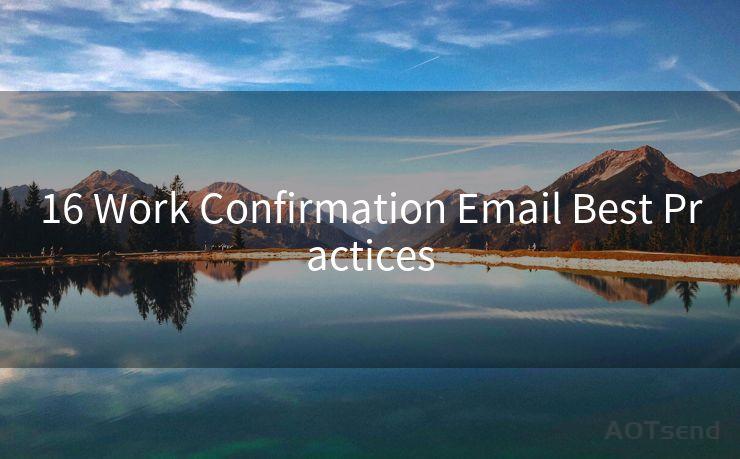16 Work Confirmation Email Best Practices




When it comes to professional communication, the work confirmation email plays a crucial role. It not only acknowledges the receipt of information or a task but also sets the tone for further collaboration. Here are 16 best practices for crafting effective work confirmation emails that will enhance your professional communication skills.
1. Clear Subject Line
Start with a clear and concise subject line that summarizes the content of your email. For example, "Confirmation of Project XYZ Details Received."
2. Prompt Response
Send your confirmation email promptly after receiving the information or task. This shows efficiency and professionalism.
3. Accuracy in Details
Ensure all details mentioned in your confirmation email are accurate. Double-check facts, figures, and any other relevant information.
4. Use of Formal Language
Maintain a formal tone in your email, avoiding colloquial or informal language. This enhances the professionalism of your communication.
5. Structure and Clarity
Structure your email in a logical manner, with clear paragraphs and headings if necessary. Use bullet points or lists to make information easier to digest.
6. Confirmation of Receipt
Explicitly state that you have received the information or task and understood the requirements. This clarity helps avoid any future misunderstandings.
7. Action Plan
If possible, outline your next steps or action plan related to the confirmed task or information. This gives the recipient a clear idea of what to expect.
8. Expression of Appreciation
Show gratitude for the information or task received. A simple "Thank you for providing the necessary details" suffices.
9. Avoid Redundancy
Stick to the point and avoid repeating information unnecessarily. A confirmation email should be concise and to the point.
10. Proofreading
Always proofread your email before sending to avoid any grammatical or spelling errors that might detract from your professionalism.
11. Call to Action
If there are further steps required from the recipient, clearly state them. For example, "Please confirm receipt of this email at your earliest convenience."

12. Signature Block
Include a professional signature block with your contact information for easy reference.
13. Avoid Attachments
Unless absolutely necessary, avoid sending attachments with confirmation emails. They can often be flagged by spam filters.
14. Privacy Considerations
Be mindful of privacy when confirming sensitive information. Use encrypted email or other secure methods if needed.
15. Follow-Up
If no response is received within a reasonable timeframe, consider sending a follow-up email to confirm receipt.
16. Archive for Reference
Always keep a copy of your confirmation emails for future reference, especially if they contain important details or agreements.
🔔🔔🔔
【AOTsend Email API】:AOTsend is a Managed Email Service for sending transactional emails. Support Email Types: reminders, authentication, confirmations, notifications, verification codes, invoices, password resets, account activations, billing statements, two-factor authentication (2FA), and one-time passwords (OTP) emails, etc. $0.28 per 1000 Emails. 99% Delivery, 98% Inbox Rate.
You might be interested in:
Why did we start the AOTsend project, Brand Story?
What is a Managed Email API, How it Works?
Best 25+ Email Marketing Platforms (Authority,Keywords&Traffic Comparison)
Best 24+ Email Marketing Service (Price, Pros&Cons Comparison)
Email APIs vs SMTP: How they Works, Any Difference?
By following these 16 best practices, you can ensure that your work confirmation emails are professional, clear, and effective. Remember, good communication is the key to successful collaboration and avoiding any potential misunderstandings. Make sure your emails reflect the high standards of your work ethic and professionalism.




Scan the QR code to access on your mobile device.
Copyright notice: This article is published by AotSend. Reproduction requires attribution.
Article Link:https://www.mailwot.com/p6292.html



